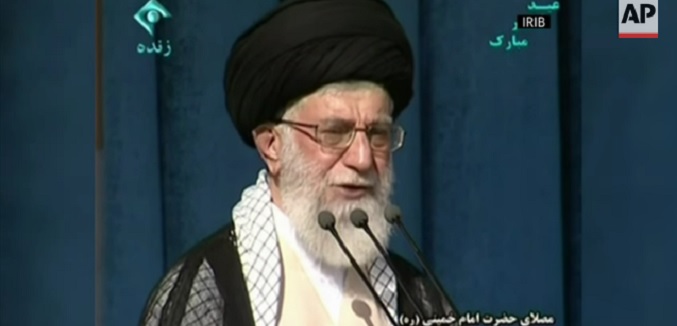The Iranian Foreign Ministry on Tuesday used the government-controlled Fars News Agency to signal opposition to a proposed deal with the P5+1 that would see Tehran gaining wide-ranging sanctions relief in exchange for removing the “plumbing” between its tens of thousands of centrifuges, a few days after the contours of the deal were revealed by The New York Times:
Supreme Leader’s senior advisor Ali Akbar Velayati said Iran would never accept to decrease the number of its operating centrifuge machines.
“The Islamic Republic of Iran’s stances are the direct opposite to this (proposal) and Iran will by no means accept what the Americans want to impose on this country outside the international regulations,” Velayati said after his meeting with Kuwaiti Deputy Foreign Minister Khaled Jarallah in Tehran on Tuesday.
He noted that the Iranian Supreme Leader (Ayatollah Seyed Ali Khamenei) has also on different occasions declared Iran’s stances in this regard, which are contrary to what the Americans are looking for.
Iranian Foreign Ministry Spokeswoman Marziyeh Afkham was more cautious, noting that “no plan that would be accepted by all the negotiating sides has been agreed upon as yet.” The expressions of opposition are not credible, and raised suspicions that the Iranians were trying to create the appearance of opposition so that the deal could be characterized as a difficult compromise on their part. The agreement, under which Iran would not be required to dismantle any of its centrifuges, had been immediately and broadly read as an overwhelming concession to Iranian negotiators, who had for months insisted that Tehran would not meet long-standing international demands obligating the Islamic republic to dismantle its uranium enrichment infrastructure.
Analysts had reacted to that absolutist stance by worrying that it guaranteed a deadlock, inasmuch as Obama administration figures were explicitly stating at the time that no deal would be struck in the absence of significant dismantlement. White House Press Secretary Jay Carney had for example told reporters last January that any deal would “include the dismantlement of significant portions of [Iran’s] nuclear infrastructure,” lest the Iranians be left with sufficiently intact infrastructure to rush across the nuclear finish line. Ray Takeyh, a senior fellow at the Council on Foreign Relations, told the Washington Post on Tuesday that “it has been the 5 plus 1 position all along that Iran has to dismantle a considerable portion of its existing centrifuges” and that “this proposal would once more step away from that red line.”
Meanwhile the pro-Israel lobby AIPAC issued a memo bluntly assessing the situation and outlining the contours of a good deal:
The United States must insist that any final nuclear agreement with Iran include the dismantlement of centrifuges such that Tehran is left without a uranium path to a nuclear weapon. Alternative “creative” approaches – such as allowing Iran to disconnect the links between centrifuges – would provide inadequate insurance against an Iranian breakout. Congress must firmly demand that any agreement ensure Iran cannot achieve a nuclear weapons capability.
The memo also stated that “simply disconnecting the links between cascades of centrifuges, or individual machines, may not sufficiently lengthen Iran’s breakout time and could be easily reversed” and described a range of statements and legislation declaring that any suitable deal would have to include dismantlement.
In addition to Carney’s January statement, the memo described March letters from over 390 House members and 83 Senators demanding that dismantlement be part of any agreement, as well as the Comprehensive Iran Sanctions, Accountability and Divestment Act of 2010 in which the president was required to certify that Iran has “verifiably dismantled” its nuclear program prior to the lifting of sanctions.
[Photo: Associated Press / YouTube]




